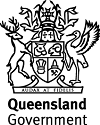Published Thursday, 06 February, 2025 at 01:30 PM

Minister for Health and Ambulance Services
The Honourable Tim Nicholls
MEDIA STATEMENT: Labor’s horror handling of regional maternity services revealed
Labor’s horror handling of regional maternity services revealed
- Crisafulli Government’s 100 Day Plan commitment to assess regional maternity services has exposed chronic workforce gaps created by Labor.
- Assessment revealed birthing bypasses at eight hospitals and rural health services since July 2023.
- Staff vacancy rates for key maternity professions are as high as 17.91%, forcing birthing mothers to drive hundreds of kilometres to larger facilities.
A critical assessment into regional maternity services commissioned under the Crisafulli Government’s 100 Day Plan, has exposed the true horror of Labor’s birthing crisis.
A decade of Labor neglect, resulted in workforce shortages rising to between 11.5% and 17.91% for key maternity professions across regional Queensland.
Profession-wide, there are staffing vacancies of up to 14.2% in obstetrics, 17.9% in anaesthetics, and 11.5% in midwifery, with some facilities experiencing vacancy rates far above this.
The lack of skilled maternity staff led to rural hospitals sending birthing mothers to larger facilities, often hundreds of kilometres away.
Between 1 July 2023 and 8 January 2025, eight facilities in regional and rural Queensland experienced periods of birthing bypass, including Beaudesert Hospital, Ingham Health Service and Mareeba Hospital.
Unlike the former government’s band-aid solutions, the Crisafulli Government’s Easier Access to Health Services plan is already starting to diagnose and treat pressures within our health system.
The launch of real-time health data is already providing critical information to Queenslanders, and the renaming of Satellite Hospitals will end confusion as to what medical care these facilities provide.
Minister for Health and Ambulance Services Tim Nicholls said a decade of Labor had left significant staffing gaps and the repeated and prolonged closure of regional Queensland birthing services in its wake.
“The Crisafulli Government is committed to delivering quality health services closer to home for regional Queenslanders, including birthing services,” Minister Nicholls said.
“Without our hardworking health professionals across obstetrics, anaesthetics and midwifery, we cannot deliver and maintain birthing services in regional facilities.
“The assessment has highlighted the significant gaps in staffing levels across these professions; the data demonstrates the impacts of workforce shortages and maldistribution affect regional Queenslanders far more than their metropolitan counterparts.
“Across the state, Labor has left a shortfall of over 150 clinical positions across crucial maternity professions, affecting the access of Queenslanders to birthing services.
“The Crisafulli Government will reinstate the maternity services at Biloela and Cooktown hospitals which have been closed since 2022.
“The resumption of planned birthing services at Biloela and Cooktown is contingent on adequate staffing being available.
“The Crisafulli Government is committed to ensuring the sustainable delivery of rural birthing services and is working to develop a home-grown health workforce strategy to train and hire the clinicians needed for the next decade.”
ENDS
MEDIA CONTACT: David McLachlan 0428 716 171
BACKGROUND
Birthing services within Queensland Health facilities are provided by a maternity team that comprises, at a minimum, clinicians who specialise in obstetrics, clinicians who specialise in anaesthetics, and midwives.
Obstetric skills are provided by either a general practitioner obstetrician, rural generalist obstetrician or specialist obstetrician. Anaesthetic skills are provided by general practitioner anaesthetists, rural generalist anaesthetists or specialist anaesthetics.
The assessment focused on these three core professional areas because all birthing services currently require these core groups for services to be maintained.
The assessment considered facilities that are most at risk of temporary closure of birthing services resulting from workforce shortages. These are sites designated as Clinical Services Capability Framework (CSCF) Maternity Module level 3 and 4 (33 sites). Notably, not all CSCF level 3 and 4 sites are at risk of temporary closure.
- Obstetrics
- Across 22 CSCF level 3 facilities that utilise a general practitioner obstetricians/rural generalist obstetrician workforce, there is a reported gap of 9.4FTE or 14.2% vacancy rate.
- Across 11 CSCF level 4 facilities that utilise a specialist obstetrician workforce, there is a reported gap of 7.95FTE, or 12.5% vacancy rate.
- Anaesthetics
- Across 11 CSCF level 4 facilities that utilise a specialist anaesthetics workforce, there is a reported gap of 26.54FTE or 17.9% vacancy rate.
- Midwifery
- Overall, for the midwifery workforce at the in-scope facilities there is a gap of 107.57FTE or 11.5% vacancy rate. The gap varies from facility to facility.
CSCF Level 3 facilities: Atherton, Innisfail, Mareeba, Biloela, Emerald, Longreach, Goondiwindi, Kingaroy, Stanthorpe, Warwick, Dalby, Proserpine, Beaudesert, Gympie, Charleville, Roma, St George, Cooktown, Thursday Island, Weipa, Ayr, Ingham
CSCF Level 4 facilities: Rockhampton, Gladstone, Toowoomba, Mackay, Caboolture, Redcliffe, Redland*, Mt Isa, Bundaberg, Hervey Bay, Ipswich*
*These metropolitan facilities were included recognising that they provide services for some people in regional or rural areas.

